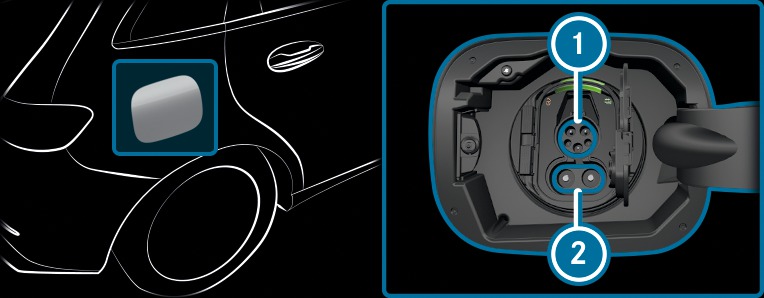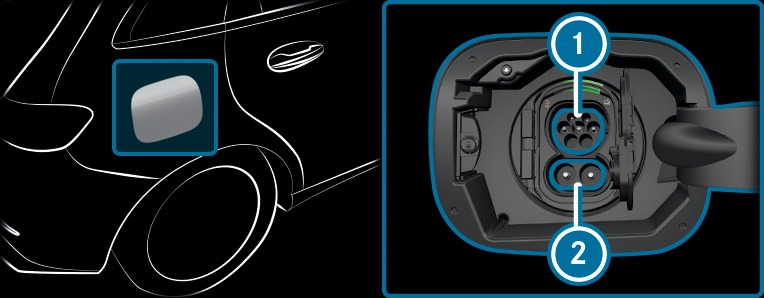Lithium-ion batteries experience a natural self-discharge.
Exhaustive discharging can therefore occur if the vehicle is idle for several months. This can damage the high-voltage battery.
As a result of its basic characteristics, the storage capacity of and the amount of energy available from the high-voltage battery decreases over the course of its life. Due to this, both the maximum electrical range that can be achieved by the vehicle and its maximum electrical output can be impaired.
a high level of charge, especially if the vehicle is idle for a lengthy period of time
frequent rapid charging with direct current (mode 4)
leaving the vehicle idle for lengthy periods at high ambient temperatures
Only charge the high-voltage battery with direct current (mode 4) if necessary.
If leaving the vehicle idle for lengthy periods, park up the vehicle with a high-voltage battery charge level between 30% and 50%. Do not keep the high-voltage battery continuously connected to power supply equipment.
If leaving the vehicle idle for lengthy periods of time avoid, if possible, high ambient temperatures.
Check the high-voltage battery's level of charge every six weeks More.
Charge the high-voltage battery if the charge level is below 20%.
Do not disconnect the 12 V battery even if the vehicle is left idle for a lengthy period. Otherwise, the condition of the vehicle's high-voltage battery cannot be monitored.
Type 1 for charging with alternating current (mode 2/3)
Combo 1 for charging with alternating current (mode 2/3) and charging with direct current (mode 4)
Type 2 for charging with alternating current (mode 2/3)
Combo 2 for charging with alternating current (mode 2/3) and charging with direct current (mode 4)


 Type 1 or type 2 connection for charging with alternating current
Type 1 or type 2 connection for charging with alternating current  Socket extension for charging with direct current
Socket extension for charging with direct current
When using a CCS (Combined Charging System) charging cable to charge with direct current at a combo vehicle socket, both vehicle socket connections  and
and  are used for charging.
are used for charging.
Charging through recuperation while the vehicle is in motion
Charging with alternating current when stationary:
At a mains outlet (mode 2)
At a wallbox or charging station (mode 3)
Charging with direct current when stationary (vehicles with combo vehicle sockets):
At a fast charging station (mode 4)
Depending on the country-specific vehicle equipment and your vehicle's charging cable, single phase AC charging is also possible.
Observe the different grid requirements of your current location when charging. Only use charging cables which conform to the grid requirements. Consult a qualified electrician or your local grid operator if you have any questions.
It is recommended that you charge the high-voltage battery at a wallbox or charging station due to the improved charging performance and better charging efficiency offered.
High or low outside temperatures
Electrical auxiliary consumers in the vehicle being switched on, e.g. operating the air conditioning system
Extended periods without charging
High or low outside temperatures
Extended periods without charging
The maximum available charge current of the charging facility
The charging current set (mode 2) in the multimedia system More

